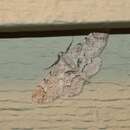Conservation Status
provided by University of Alberta Museums
Not of concern.
- license
- cc-by-nc
- copyright
- University of Alberta Museums
Cyclicity
provided by University of Alberta Museums
Late May to mid July, with the peak flight period usually in late June.
- license
- cc-by-nc
- copyright
- University of Alberta Museums
Distribution
provided by University of Alberta Museums
Widespread throughout forested regions of North America, from Alaska to Newfoundland south to Georgia and Mexico (McGuffin 1977).
- license
- cc-by-nc
- copyright
- University of Alberta Museums
General Description
provided by University of Alberta Museums
Very similar to Iridopsis ephyraria and humaria. Larvaria is the most widespread and common of the three. I. ephyraria and humaria are likely to be encountered only in the extreme eastern parts of the province. Genitalic examination is necessary to confirm identification. The male uncus is simple in larvaria but forked in ephyraria and humaria.
- license
- cc-by-nc
- copyright
- University of Alberta Museums
Habitat
provided by University of Alberta Museums
Primarily a species of mixed wood and deciduous boreal forests in Alberta.
- license
- cc-by-nc
- copyright
- University of Alberta Museums
Life Cycle
provided by University of Alberta Museums
Wagner et al. (2001) illustrate the larva, and McGuffin (1977) gives a detailed description of all immature stages. The larva rests with the body arched up and the thoracic legs on the substrate (Wagner et al 2001). Hibernation is as a pupa, and adults are nocturnal and come to light.
- license
- cc-by-nc
- copyright
- University of Alberta Museums
Trophic Strategy
provided by University of Alberta Museums
Larvae feed on a variety of deciduous trees and shrubs, most commonly on Paper Birch (Betula papyrifera) and Speckled Alder (Alnus rugosa) (Prentice 1963).
- license
- cc-by-nc
- copyright
- University of Alberta Museums

